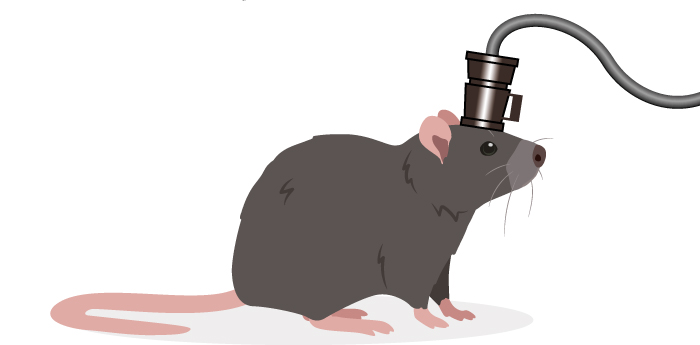November 2024 | Volume 26 No. 1
The Fear Factor
Listen to this article:
In the Hollywood movie, Eternal Sunshine of the Spotless Mind, characters get their memories erased to help them forget about bad relationships. It is one of Professor Cora Lai Sau-wan’s favourite films and it has inspired her in ways that show how life can imitate art.
Using mouse models, Professor Lai and her team discovered new insights on how the brain responds to fear and how animals could be de-conditioned against a learnt fear response – essentially, have that memory erased – particularly during sleep.
The animals had listened to a tone that was followed by a physical foot-shock and had developed a fear response – freezing in place – whenever they heard the tone later even without foot-shock.
“Through that study, we basically discovered that we could target a fear memory and erase it. It’s non-invasive, although it’s still experimental at this stage,” she said.
“The aim of our laboratory is to get a better understanding of how memory is formed, how it is retrieved, how it is consolidated or reconsolidated. Memory is like data in our brain and it affects our behaviour and our personality, but it’s not well understood.”
Branches, leaves and hotspots
Professor Lai’s research on fear centres around the synapses of the brain, which change when we experience or learn something. Each of the brain’s neurons has many synapses that communicate with other neurons. The transmitted information is stored in the neuron’s dendrites, which have many little protrusions, like leaves on a branch, called dendritic spines, where memories are stored.
During this memory-making process, Professor Lai and her team observed that the dendritic spines of animals undergoing fear learning respond differently depending on their location in the brain.
“It was puzzling because when fear learning occurs, there are fewer dendritic spines in the frontal cortex [which controls things like memory, emotions and physical movement], whereas in other cortical regions, there are more dendritic spines,” she said.
To examine that further, the team tested fear extinction – as in her favourite movie – by training the mouse to unlearn the fear that had become associated with the tone. They played the tone repeatedly but without a physical shock, and the mouse brain responded differently. It formed more dendritic spines very close to where it had previously eliminated the spines under fear conditioning in the frontal cortex.
“Basically, that area is like a hotspot or plug. When there’s a need, the dendritic spine is removed. Once that need is gone, it is re-plugged close to the same spot,” Professor Lai said.
“It is believed that memories are not stored randomly on neurons but through memory allocation, so similar memories are stored on the same dendrites. This is exactly what we observed.”
She also detected changes in dendritic spines in another area of the brain, the auditory cortex which processed the tone sound, but in reverse. Here, fear conditioning led to more spine formation, but this was eliminated with fear extinction.

Electroencephalogram (EEG), electromyography (EMG) and a miniature microscope are used to observe the calcium responses of neurons in the frontal cortex and their relation to sleep and fear learning in mice.
The role of sleep
A big question underpinning all of this has been the role of sleep. Sleep is known to enhance memory, but other researchers have produced contradictory evidence when it came to fear learning – some found that sleep enhanced it, others that it inhibited it.
Professor Lai and her team decided to look for clues in non-REM [rapid eye movement] sleep in relation to fear learning, but again the results were mixed. So they broke that down into slow-wave non-REM sleep, when the brain oscillation becomes very slow, and other non-REM sleep.
“And voilà, we found opposite events. The slow-wave sleep actually enhanced fear consolidation and the other stages inhibited it. We found this effect not only in the animal’s behaviour, but in the dendritic spine plasticity,” she said.
The results, recently published in Advanced Science, help explain why earlier evidence was contradictory. Professor Lai is now studying the mechanism to gain a deeper understanding of how and why the brain generates these different responses in fear learning.
The research holds promise for psychiatric applications. A number of human studies have shown that specific memories can be reactivated during sleep, in a process called reconsolidation. The hope is her research could be developed to help sufferers of post-traumatic stress disorder by deactivating memories. “Our laboratory is not working on humans but we’re trying to look at the mechanism underlying that. That’s our next target,” Professor Lai said.
She added that the current work is not only about excitatory neurons, but also inhibitory interneurons which act like brakes on the input state. A number of psychiatric disorders arise from dysfunctions in the excitatory-inhibitory balance, so there is potential to open pathways to treatments for these conditions, too.
Memory is like data in our brain and it affects our behaviour and our personality, but it’s not well understood.

Professor Cora Lai Sau-wan

